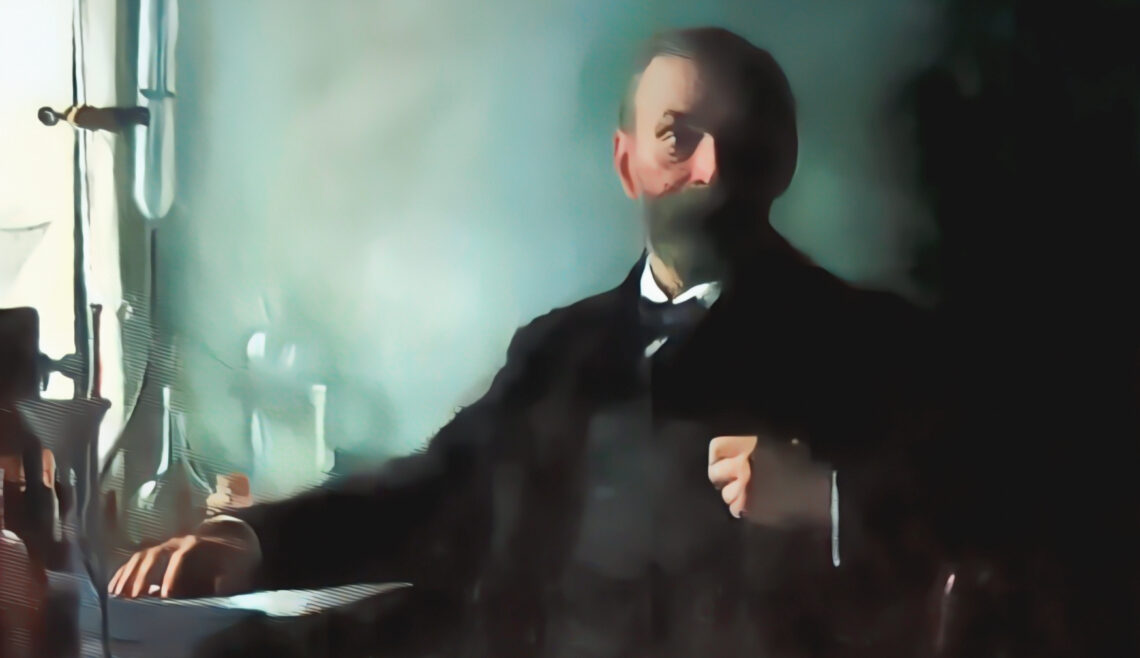
Alfred Nobel’s Guilt
We’ve all heard the story of Alfred Nobel, a guilt-ridden Swedish industrialist who established a number of prizes for the benefit of humanity to make up for his role in the arms race. Just a pity that little or any of it is actually true. But that story, and how it was canonized, can give us good insight into how historical myths are created, and how they influence our common heritage.
On November 27th, 1895, the Swedish industrialist Alfred Nobel signed his will in the Swedish-Norwegian club in Paris. In it, he donated his entire fortune to establishing five awards for achievements in science and culture: physics, chemistry, medicine (or physiology), literature and the promotion of peace. The last is something of an outlier, not only because it was not tied to a specific discipline, but also because it was awarded by the Norwegian and not the Swedish Academy of Sciences. It was likely suggested (and pushed) to him by Bertha von Suttner, a long-time friend and correspondent of Nobel’s and one of the first winners of the prize in 1905.
Nobel had made his fortune in oil and with the 350+ patents in his name: he was an established innovator and researcher. One of these patents was for dynamite, an explosive that made it possible to safely use the power of nitroglycerine, widely used in mining and civil engineering. Dynamite was a huge improvement over the often dangerous use of nitroglycerine proper, and the idea that it should have prompted the – admittedly often depressed – Nobel to become guilt-ridden is somewhat preposterous.
How did the story gain prominence, then? I think what we see here is how a historical fabrication became immortal because it was also useful as a propaganda device. The story is that upon the death of his brother Ludvig (in 1888), a French newspaper confused the brothers and wrote how “Alfred Nobel, who brought destruction to so many” had died. This allegedly sent Alfred into a tailspin of guilt and depression, from which he hoped to redeem himself through the prizes that were named after him. The only problem is that no one has ever succeeded in tracking down that article.
However, Nobel’s relationship with France had become more than a little bit fraught by the time he signed his testament. In 1891 he was faced with charges of illegally selling weapons parts to Italy, and saw himself forced to relocate out of France, to San Remo, where he would eventually die in 1896. This tallies well with the “death merchant” image of Nobel in France that is suggested in the story of the newspaper article. In addition, the aforementioned Bertha von Suttner, a prominent peace activist, appears to have used the story of redemption to give greater authority to the Peace Prize. It was this combination of fabrication, likelihood and advocacy that cemented the story in the public consciousness.
The truth, alas, is probably more prosaic. Earlier in 1895, the world’s richest man, Andrew Carnegie, had sold all his numerous companies and intended to spend his entire fortune of 350 million dollars (around 30 billion in today’s money) on humanitarian causes, including the establishment of a system for the arbitration of armed conflict.[1]I wrote a little book about Carnegie and dinosaurs, which you’re quite welcome to purchase, of course. Carnegie’s actions received wide international publicity, and it seems more than a little likely that Nobel, who shared Carnegie’s enthusiasm for arbitration, felt inspired by his example.
However, the myth proves nearly impossible to kill, because of its moral message, and had even been repeated by the Nobel Prize Committee itself. And that should sound familiar to many of us who work in heritage. For on the one hand heritage institutions are the defenders of authenticity; but on the other strong, impactful narratives can help us to get our message, our institution, our project, across. I’ve personally seen multiple times that for that reason, like the Nobel story, heritage institutions kept repeating dubious history because the noticed it hit a chord with their audience. And these misconceptions have also often shaped the identity of heritage institutions, so that getting rid of them feels like abandoning their history. But often it’s also laziness, a lack to think creatively about our story and our history and to shape new narratives. Because debunking stories has also proved a powerful of introducing newer, more accurate ones. We should treasure our stories, but our myths could probably use an overhaul.
Ilja Nieuwland
References
| ↑1 | I wrote a little book about Carnegie and dinosaurs, which you’re quite welcome to purchase, of course. |
|---|


